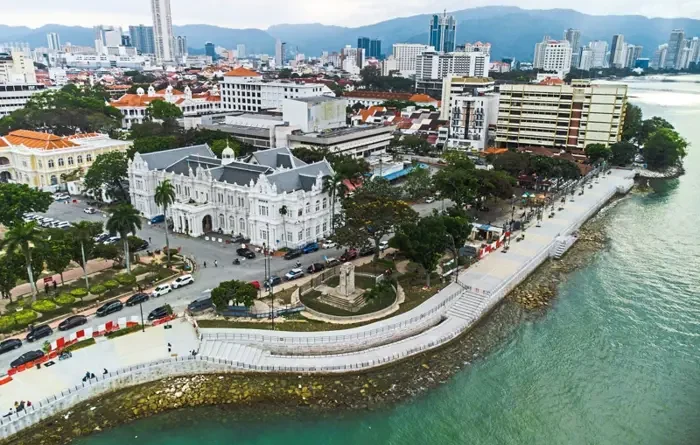Penang high-end condominium prices up
GEORGE TOWN: High-end property prices in Penang rose by 7% to 10% in 2024 from a year ago, reflecting the steady demand among locals and foreigners.
One Asia Property Consultants (Pg) Sdn Bhd executive director Chandra Mohan Krishnan said prices had increased in Bayan Baru, Pulau Tikus and Seri Tanjung Pinang as buyers went for properties priced above RM1mil.
“The rising cost of building materials such as sand and the increase in sales and services tax were among the reasons for the hike in property prices,” Chandra said.
The recent federal government approval for the Penang Light Rail Transit (LRT) project to ease traffic congestion in the state is also expected to enhance property value further.
“Segment one of the Penang LRT Mutiara Line project, connecting Komtar to Silicon Island, is expected to ease traffic congestion and enhance connectivity.
“Based on the alignment, several housing projects are expected to benefit from the LRT network.
“Among the projects that will benefit from the LRT project are the Queens Residences @ Queens Waterfront in Bayan Baru, Lumina Residence in George Town and Codrington Residence in Pulau Tikus,” Chandra added.
Chandra said they were the most sought-after condominiums with built-up areas between 1,000 sq ft and 1,500 sq ft priced from RM900 per sq ft.
“The residents of these projects will enjoy easy access to the LRT when it is ready. Purchasers prefer these medium condominiums as they are easier to upkeep. Nowadays, households tend to have fewer children,” he said.
Ideal Property Group general manager (sales and marketing) Nancy Teo said although the ringgit had strengthened, making Malaysian properties more expensive, there was still a healthy level of interest to invest in high-end properties in Penang,
Teo added that the enquiries came from Taiwan, Singapore and Hong Kong.
“Our best-selling condominium projects include Lucerne Residences and Queens Residences Q3 @ Queens Waterfront.”
Prices range from RM730,000 to RM850,000 for Lucerne Residences and RM950,000 to RM2mil for Queens Residences 3.
“The mainland Chinese are restricted from taking more than US$50,000 out of China, thus it is difficult for them to shop for properties here.
“Nevertheless, we noticed that the majority of the Chinese customers prefer completed units and are keen to move in immediately. The Chinese nationals who can buy properties in Penang are the ones with investments here and they already have their funds parked outside China.”
Teo said foreigners preferred high-end projects integrated in a mixed-development scheme that were close to schools and hospitals.
Eastern & Oriental Bhd general manager (marketing and sales) Ramesh Gnanasegaran said the high-end property market in Penang, particularly for properties priced above RM1mil, has seen a noticeable uptick, as evidenced by recent project launches.
general manager (marketing and sales) Ramesh Gnanasegaran said the high-end property market in Penang, particularly for properties priced above RM1mil, has seen a noticeable uptick, as evidenced by recent project launches.
“Penang’s economic outlook is further strengthened by significant government investments in public infrastructure, indicating readiness for ongoing growth and development.
“The state continues to be a favoured destination for investors from Singapore, Hong Kong, China and Indonesia, with an increasing interest from Taiwanese buyers as well,” he said.
The number of overhang residential houses in Penang dropped to 2,400 units in the first half of 2024 from 2,901 units in the same period a year ago.
The National Property Information Centre (Napic) report estimated the overhang value to be RM2.02bil.
According to Napic, Penang ranks fourth in the country with the most overhang properties, after Perak (4,161 units), Johor (3,219 units) and Kuala Lumpur (3,051 units)
In the country, the completed but unsold units fell to 22,642 units, worth RM14.24bil, in the first half of 2024, continuing the decline from 25,816 units worth RM17.68bil in the second half of 2023.
“Condominiums and apartments accounted for 59.8% or 13,535 units of the overhang.
“Terrace houses represented 24.4% or 5,524 units, while semi-detached and detached houses comprised 8.2% or 1,867 units. The remaining 7.6% consisted of other houses,” said Napic.













Leave a Reply